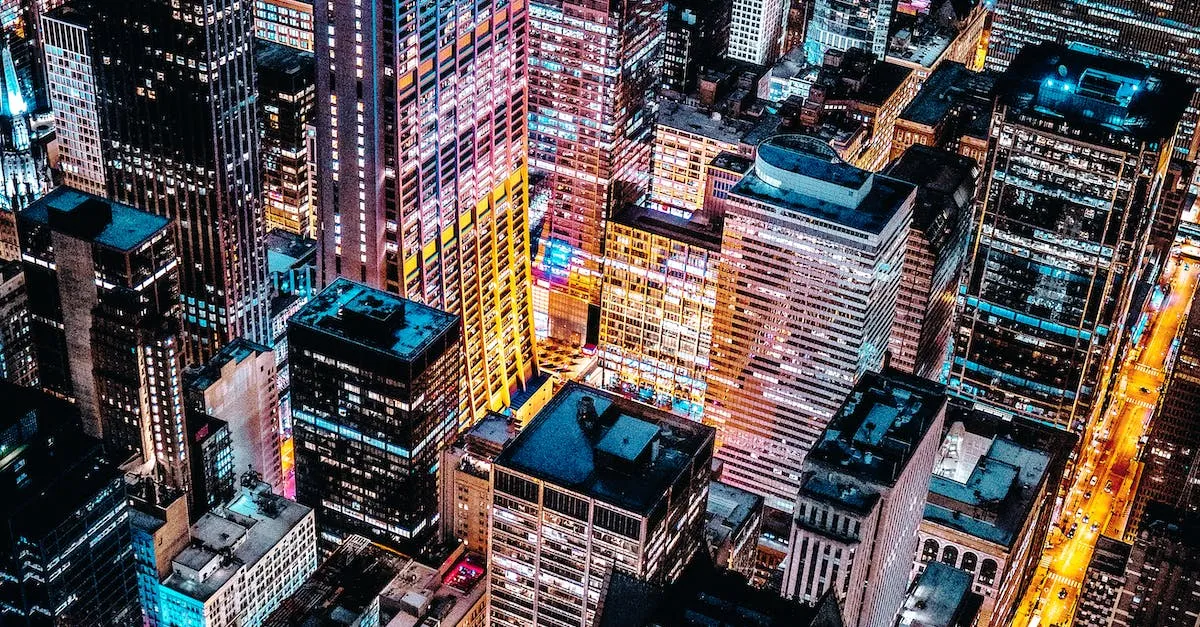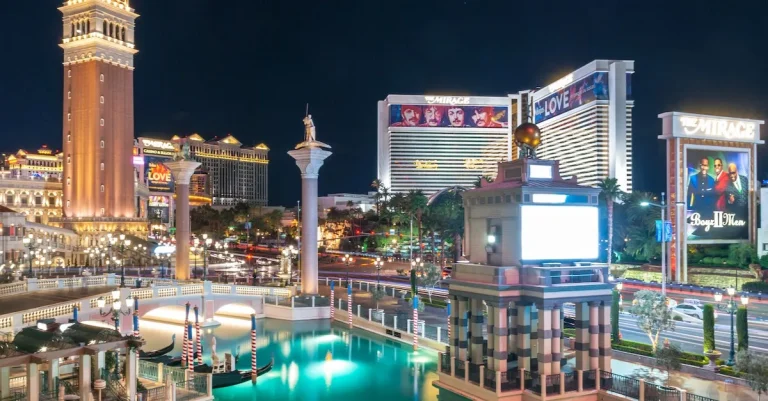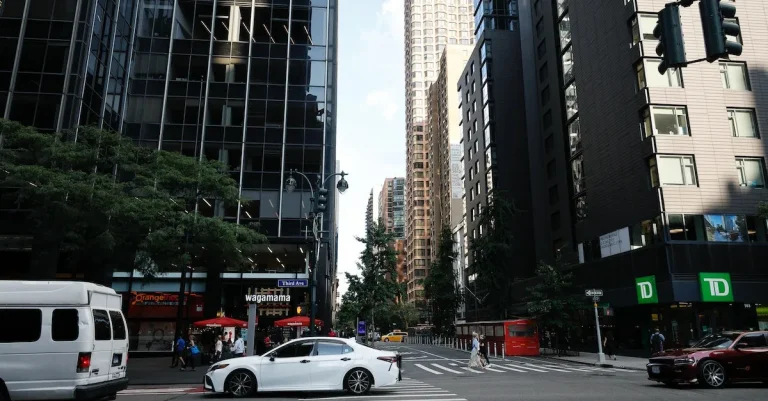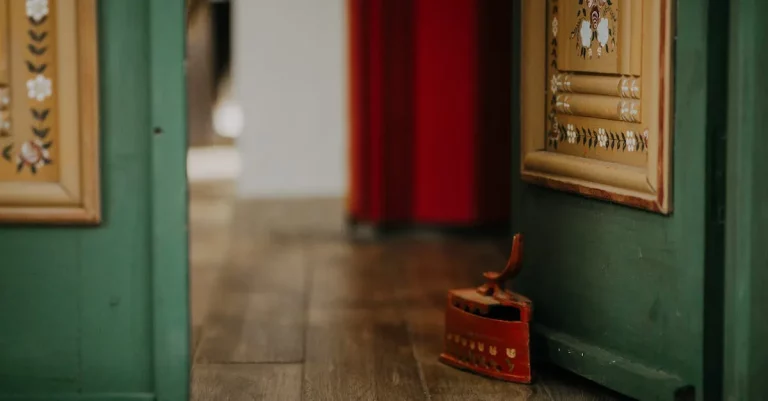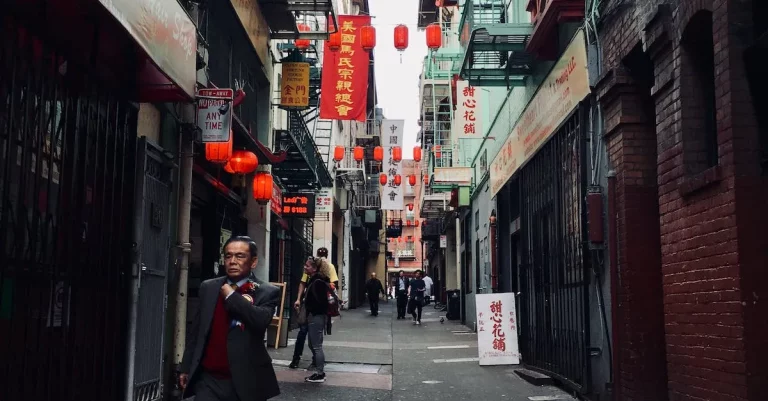Defining Downtown Chicago: The Heart Of The City
With its iconic skyscrapers, world-class museums, and bustling shopping districts, downtown Chicago comprises the vibrant center of the city. But what exactly constitutes downtown in Chicago?
If you’re short on time, here’s a quick answer to your question: Downtown Chicago is considered the central business district, including landmark areas like the Loop, River North, Streeterville, and South Loop. These neighborhoods feature major commercial buildings, cultural attractions, and transit hubs.
In this comprehensive guide, we will dive into the geography, history, attractions, transportation, and culture that shape downtown Chicago. We will detail the key neighborhoods and outline what makes this area the heartbeat of the Windy City.
Where is Downtown Chicago?
Downtown Chicago is the vibrant heart of the city, encompassing several neighborhoods that are known for their bustling streets, iconic landmarks, and rich history. From the iconic Loop to the trendy River North, Downtown Chicago offers a diverse range of experiences for both residents and visitors.
The Loop
The Loop is considered the central business district of Chicago and is named after the elevated train tracks that form a loop around the area. Home to iconic skyscrapers like the Willis Tower (formerly known as the Sears Tower) and the Chicago Board of Trade Building, the Loop is a bustling hub of commerce, culture, and entertainment.
It is also home to Grant Park, Millennium Park, and numerous theaters, making it a popular destination for tourists and locals alike.
River North
River North is a trendy neighborhood located just north of the Loop. Known for its vibrant art scene, upscale restaurants, and stylish galleries, it is a favorite spot for art enthusiasts and foodies. The area is also home to the Merchandise Mart, one of the largest commercial buildings in the world, which houses a variety of showrooms and offices.
Streeterville
Situated east of the Magnificent Mile, Streeterville is a lively neighborhood that offers stunning views of Lake Michigan. It is home to iconic attractions such as Navy Pier, the John Hancock Center, and the Museum of Contemporary Art.
With its mix of residential buildings, hotels, and shopping destinations, Streeterville is a popular destination for both tourists and locals.
South Loop
The South Loop is an up-and-coming neighborhood that has undergone significant development in recent years. It is home to the famous Museum Campus, featuring the Field Museum, Shedd Aquarium, and Adler Planetarium.
The South Loop also offers easy access to Grant Park and Soldier Field, making it a great neighborhood for outdoor activities and sports enthusiasts.
The Development of Downtown
Downtown Chicago has a rich history of development that has shaped it into the vibrant urban center it is today. From its early beginnings to the towering skyscrapers of the 20th century, the growth of downtown has been both fascinating and influential.
Early Settlement
The story of downtown Chicago begins with its early settlement in the late 18th century. The area was initially a trading post and a hub for Native American tribes. As more settlers arrived, the city began to take shape with the construction of the Fort Dearborn military post in 1803.
The settlement grew rapidly, attracting immigrants from all over the world who sought opportunities in the burgeoning city.
By the mid-19th century, downtown Chicago was a bustling commercial center, with a thriving shipping industry and a network of canals and railways that connected it to the rest of the country. The city’s strategic location on the shores of Lake Michigan made it an ideal transportation hub, further fueling its growth.
Growth of Industry and Rail
The late 19th century saw a rapid expansion of industry in downtown Chicago, with the rise of manufacturing and the arrival of major corporations. The city became known for its meatpacking industry, earning it the nickname “Hog Butcher for the World.”
The construction of the Union Stock Yards and the development of the Chicago Board of Trade solidified Chicago’s status as a major economic powerhouse.
The growth of railroads played a crucial role in the development of downtown Chicago. The city became a major transportation hub, with multiple rail lines converging in the downtown area. This allowed for the efficient movement of goods and people, further stimulating economic growth.
20th Century Skyscrapers
The 20th century brought about a dramatic transformation of downtown Chicago’s skyline. The city became a pioneer in the construction of skyscrapers, with iconic buildings such as the Willis Tower (formerly known as the Sears Tower) and the John Hancock Center becoming symbols of Chicago’s architectural prowess.
The construction of these towering structures was made possible by advancements in engineering and construction techniques. Steel frames and reinforced concrete allowed for the creation of tall, structurally sound buildings.
These skyscrapers not only reshaped the city’s skyline but also served as a testament to Chicago’s status as a global city.
Today, downtown Chicago continues to evolve and grow. It remains a vital economic and cultural hub, attracting businesses, residents, and tourists alike. With its rich history and ongoing development, downtown Chicago truly is the heart of the city.
Top Sights to See Downtown
Willis Tower
One of the most iconic landmarks in Chicago’s downtown area is the Willis Tower. Formerly known as the Sears Tower, it held the title of the tallest building in the world for over two decades. Visitors can take an elevator up to the Skydeck on the 103rd floor, where they can enjoy breathtaking views of the city and even step out onto the glass floor, known as “The Ledge.”
The Willis Tower is a must-visit for anyone looking to experience the city from new heights.
Millennium Park
Located in the heart of downtown, Millennium Park is a vibrant public space that offers a variety of attractions and activities. The park is home to the famous Cloud Gate sculpture, also known as “The Bean,” which is a favorite spot for tourists to take photos.
Visitors can also enjoy live music and performances at the Jay Pritzker Pavilion, explore the beautiful Lurie Garden, or simply relax and take in the scenery. Millennium Park is a great place to immerse yourself in the lively atmosphere of downtown Chicago.
Art Institute of Chicago
The Art Institute of Chicago is a world-renowned museum that houses an extensive collection of artwork spanning thousands of years. From ancient Egyptian artifacts to contemporary masterpieces, visitors can explore a diverse range of artistic styles and mediums.
Highlights include famous works such as Grant Wood’s “American Gothic” and Georges Seurat’s “A Sunday on La Grande Jatte.” With its impressive collection and stunning architecture, the Art Institute is a must-visit destination for art enthusiasts and history lovers alike.
Goodman Theatre
The Goodman Theatre is Chicago’s oldest and largest not-for-profit theater, known for its high-quality productions and commitment to artistic excellence. Located in the heart of downtown, the theater offers a diverse range of performances, including classic plays, new works, and world premieres.
With its talented actors, innovative staging, and engaging storytelling, a visit to the Goodman Theatre promises an unforgettable theatrical experience.
Magnificent Mile
The Magnificent Mile is a bustling stretch of Michigan Avenue in downtown Chicago, known for its luxury shopping, iconic landmarks, and vibrant atmosphere. Visitors can explore a wide range of high-end boutiques, department stores, and designer shops, as well as enjoy fine dining and entertainment options.
The Magnificent Mile is also home to architectural gems like the Tribune Tower and the Wrigley Building. Whether you’re looking to shop, dine, or simply soak in the energy of the city, the Magnificent Mile offers an unforgettable experience.
Getting Around Downtown Chicago
Downtown Chicago is a vibrant and bustling area that offers a wide range of transportation options for residents and visitors alike. Whether you’re exploring the city for the first time or navigating your daily commute, here are some of the best ways to get around downtown Chicago.
CTA Trains and Buses
The Chicago Transit Authority (CTA) operates an extensive network of trains and buses that serve downtown Chicago and its surrounding neighborhoods. The iconic “L” trains are a popular mode of transportation, offering convenient access to key destinations throughout the city.
With several lines running through downtown, you can easily hop on a train and reach your destination quickly. The CTA buses are another reliable option, providing convenient stops and routes that cover a wide area of the city.
Whether you’re commuting to work or exploring popular attractions, the CTA trains and buses are a great way to get around downtown Chicago.
Taxis and Rideshares
If you prefer a more direct and personalized transportation experience, taxis and rideshares are readily available in downtown Chicago. Companies like Uber and Lyft offer convenient and affordable options for getting around the city.
With just a few taps on your smartphone, you can request a ride and be on your way to your destination. Taxis are also a popular choice, with many cab stands located throughout downtown. Whether you need a quick ride to a meeting or want to explore the city at your own pace, taxis and rideshares are a convenient choice in downtown Chicago.
Walking and Biking
Downtown Chicago is a pedestrian-friendly area with well-designed sidewalks and bike lanes, making walking and biking popular choices for getting around. With its grid-like street layout, it’s easy to navigate the city on foot and explore its vibrant neighborhoods.
Biking is also a great option, with bike-sharing programs like Divvy offering convenient access to bicycles throughout the city. Whether you’re strolling along the beautiful Magnificent Mile or biking along the scenic Lakefront Trail, walking and biking allow you to fully experience the charm and energy of downtown Chicago.
Experiencing Downtown Life
When it comes to experiencing the vibrant energy of a city, there’s no place like downtown Chicago. With its iconic skyline, bustling streets, and a wide array of attractions, downtown Chicago truly is the heart of the city.
Whether you’re a local or a visitor, there’s something for everyone to enjoy in this dynamic urban center.
World-Class Dining
Downtown Chicago is a food lover’s paradise, offering a diverse and eclectic culinary scene. From Michelin-starred restaurants to hidden gems tucked away in alleyways, there’s no shortage of delicious food options.
Whether you’re craving deep-dish pizza, steak, or international cuisine, downtown Chicago has it all. Don’t forget to try the famous Chicago-style hot dogs and Garrett Popcorn, a local favorite. With so many dining options, you’ll never run out of new places to explore and satisfy your taste buds.
Museums and Performing Arts
For culture enthusiasts, downtown Chicago is a treasure trove of museums and performing arts venues. The Art Institute of Chicago, located in Grant Park, is one of the oldest and largest art museums in the United States.
It houses an extensive collection of art from around the world, including iconic works like Grant Wood’s “American Gothic” and Vincent van Gogh’s “The Bedroom.” Additionally, downtown Chicago is home to renowned theaters such as the Chicago Theatre and the Auditorium Theatre, where you can catch Broadway shows, concerts, and other live performances.
Immerse yourself in the rich cultural scene and be inspired by the creativity that surrounds you.
Parks and Recreation
Despite being a bustling urban center, downtown Chicago offers ample opportunities for outdoor recreation and relaxation. Millennium Park, located in the heart of downtown, is a sprawling green space that features iconic landmarks like the Cloud Gate sculpture, also known as “The Bean.”
The park’s Jay Pritzker Pavilion hosts free outdoor concerts during the summer, attracting both locals and tourists. Additionally, the Chicago Riverwalk provides a scenic pathway along the Chicago River, where you can enjoy a leisurely stroll or rent a kayak to explore the city from a different perspective.
Escape from the hustle and bustle of city life and find tranquility in these urban oases.
Festivals and Events
Downtown Chicago is known for its vibrant festivals and events that take place throughout the year. From the Taste of Chicago, a culinary extravaganza featuring food from local restaurants, to the Chicago Jazz Festival, showcasing world-class jazz musicians, there’s always something happening in downtown Chicago.
The city also hosts annual events like the Chicago Air and Water Show, where you can witness thrilling aerial performances, and the Chicago Marathon, attracting thousands of runners from around the world.
Join in the festivities and experience the lively atmosphere that makes downtown Chicago truly special.
Shopping Districts
Shopaholics will find their paradise in downtown Chicago, with its diverse range of shopping districts. The Magnificent Mile, a stretch of Michigan Avenue, is home to luxury boutiques, department stores, and flagship stores of renowned brands.
Oak Street, located just off the Magnificent Mile, is known for its high-end fashion and designer labels. For a more unique shopping experience, head to State Street, where you’ll find a mix of well-known retailers and local shops.
Whether you’re looking for high-end fashion, trendy boutiques, or vintage treasures, downtown Chicago has it all. Indulge in some retail therapy and discover your new favorite stores.
Conclusion
Downtown Chicago encompasses the heart of the city, with its iconic skyscrapers, transit hubs, arts and culture, dining, and shopping. The Loop, River North, Streeterville, and South Loop comprise the core downtown area, rich with history and pulsing energy.
In summary, downtown Chicago is defined by its central business district neighborhoods featuring commercial high-rises, attractions, and transit access that power the hub of this world-class city.

